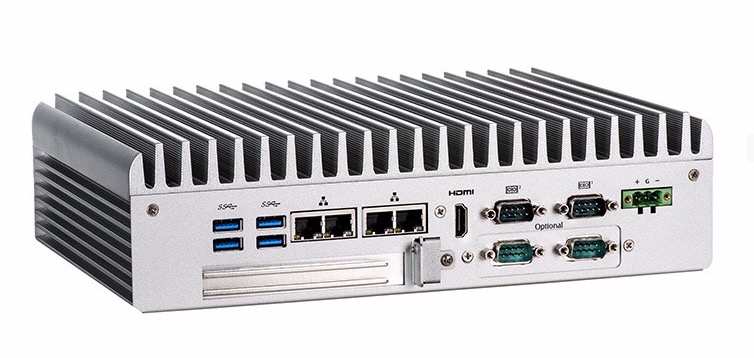Recent Posts
Fanless Embedded Intel Core & Celeron System with CAN Bus and CANopen Option
Posted by on
The eBOX700-891‑FL from Axiomtek is a fanless embedded system with numerous expansion options. It reserves space for additional CAN Bus or CANopen modules.
The embedded system supports dual DDR4-2133 SO-DIMM slots with up to 32 GiB system memory, and it is suited for vision inspection (USB/PoE), motion control, security surveillance, and industrial automation. The box PC is powered by the 7th generation Intel Core i7/i5/i3 and Celeron processors with the Intel H110 chipset.
In support of reducing deployment time, the system reserves space on its panel for end users to install additional I/O module such as CAN Bus and CANopen modules. Integrated with an IP40-rated heavy-duty aluminum extrusion and steel case, it supports a 9-VDC to 36-VDC power input with power protection, an extended operating temperature range of -40 °C to +50 °C, and up to 3 G vibration endurance to resist harsh environments.
The box PC comes with I/O interfaces including two EIA-232/422/485 ports, four USB 3.0 ports, two USB 2.0 ports, four GbE LAN ports, two HDMI ports, one Displayport, and one audio (Mic-in/Line-out). It also features an AT/ATX DIP switch for adjustments between automatic and manual operation control.
Furthermore, the embedded PC comes with expansion capabilities including two PCI Express Mini Card slots, one SIM slot, and one PCIe x4 slot. For storage needs, it is equipped with one 2,5-inch SSD/HDD and one optional mSATA interface. It supports Windows 10 IoT and Linux. To meet different application needs, the system can be wall-mounted, or DIN‑rail mounted.
Creating programs for the Internet of Things (IoT) offers you an opportunity to build and program custom devices whose functionality is limited only by your imagination.
This book teaches you to do precisely that, with solutions presented in a step-by-step format.
When you read this book, you not only learn the fundamentals of device programming, you will also be ready to write code for revolutionizing devices and robots.
You don’t need to be an expert in low-level programming to profit from this book. It describes fundamental concepts and programming techniques before diving into more complex topics.
Each of the book’s chapters and appendices comprises an appropriate level of detail to help you instantly master device programming.
 Loading... Please wait...
Loading... Please wait...


